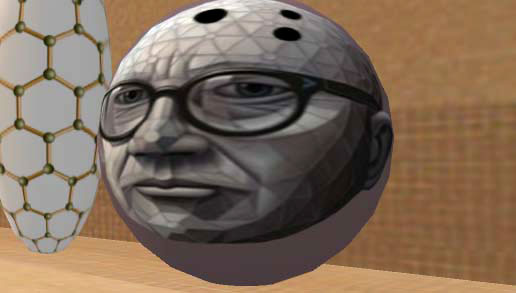
I am currently running a ‘hybrid’ class using Second Life, exploring the platform with my students to examine it’s potential for distance learning. I have just six students, seniors from the Osher Lifelong Learning Institute (OLLI) and we are lucky enough to use a small, but superb, computer lab in the University of Southern Maine library. I see the class as experimental (that is a pompous way of saying this is the first time I have run it, and I plan to run it again, but I might change things!) I aim to share some observations here on my blog and perhaps break down some of the assumptions that we all have about older computer users.
Second Life is a large, and often awkward program to learn, and I suspect that a person’s first couple of hours largely determine whether they will ever return to it. With this in mind I wanted a hybrid class with both face to face and online meetings, to help overcome the initial obstacles, and provide the opportunity to easily share experiences.
I had a great deal of information to impart at the start of the class, not only did I want to get students into the virtual world as quickly as possible; I also wanted to discuss the concept of virtual worlds and ‘immersive environments’. I had little idea how they would react, and was expecting some resistance to crop up at any moment. (After all, these students had not grown up on computer games, avatars and instant messaging.) Instead, I discovered the most open, and enthusiastic minds I have ever encountered in a classroom!

Presumably 3D environments are where the so-called ‘Digital Natives’ would have an advantage over those of us who might be described as ‘Digital Immigrants’. I imagine Digital Natives would be very at ease, and able to pick up a program like Second Life rapidly. In turn, I suspected seniors might struggle with the unwieldy Second Life client, and I wondered if they might simply give up the effort? Fortunately, my concerns about seniors struggling through this initial learning phase were completely wrong!
In fact, my students have found their way around the client surprisingly quickly. I saw this initial period as having two phases. The first phase being the introduction to the SL client; the second phase being the application of the client to explore the virtual world. I obviously wanted to get to this second phase because that would be the more rewarding experience. I knew that the 3D world, with its metaphor for the real world, would facilitate an intuitive learning experience. (Especially when compared to learning a 2D computer program like Windows with it’s desktop metaphor.) The students rapidly understood the need to tie the experience of learning about the client to practicing with it. This meant that we did get into the highly amusing phase 2 of the introduction quickly.
I also built in as much support as possible to help the students take their first steps in the virtual world:
1. The class began in the computer lab, followed by online assignments where students meet up with each other in the virtual world. Students then return to the lab to report on their experiences; we then explore new aspects of SL before students head back online.
2. In class the students can watch my computer screen on a projector observing the connection between the client controls and how they affect my avatar.
3. Each student was provided with a temporary avatar in the first class. This meant students could copy what they saw on the projector and immediately practice it for themselves.
4. The class was provided with a study guide in the form of a website that students can run in the background when using SL from home. This website displays class organizers (to act as reminders and prompts for each class). There are also tips and tutorials (using photographs taken in SL) plus links to additional external tutorials and articles of interest etc.
5. I aim to get into SL at regular times at least twice a week so that I can meet the students online and see how they are faring.

If the students were younger I probably would not provide as much help because I would assume that they already knew what to do. However, after reading the report sponsored by the British Library, and the Joint Information Systems Committee (JISC), titled Information behaviour of the researcher of the future I am less certain that youth makes learning SL that much easier? That is, this report points to the fact that many assume that the ‘Digital Native’ student has an understanding of technology, and how to apply it. The report uncovers the fact that Digital Natives tend to know how to use a wide range of software in a superficial fashion, but they have a shallow comprehension of how to apply technology. I then read some follow up blog posts by teachers and college instructors that pointed out this is something they have known for some time. (See the excellent post on this topic at Open Education: ‘Digital Immigrants teaching the Net Generation – Much Ado About Nothing. )
The OLLI students in my particular class have a surprising depth of experience with computers, their spectrum of knowledge covers using the very first computers, working with DOS and macros, to the early stages of the Internet. In other words, computer literate Baby Boomers have developed an extraordinary degree of understanding, patience and resilience when learning new software. So grandparents may have a greater openness, and sense of adventure, than their grandchildren when it comes to learning something like Second Life!
Images found in SploLand home to interactive museums of: Science, Human Perception and Humor. Science Exhibits and Exhibitions. (slurl: SploLand 185, 91, 26,)Also take a look at this! Technology Use to Come by Matt Vilano who references my class in Campus Technology Magazine. (Thank you! Matt).